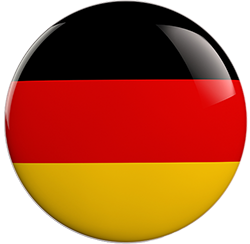What does GMP mean?
The abbreviation GMP stands for “Good Manufacturing Practice”. It is a set of guidelines and procedures designed to ensure that products in the pharmaceutical, biotechnology and food industries are manufactured in a safe and controlled environment. GMP covers all aspects of production, including raw materials, equipment, labor and the environment. The aim of GMP is to ensure the quality and safety of products and to minimize the risk of contamination, errors and deviations.
GMP and quality assurance at Ebbecke Verfahrenstechnik
The implementation of GMP guidelines for process and quality assurance in the production of pharmaceuticals, cosmetics, animal feed and food plays an important role at Ebbecke Verfahrenstechnik. This is because deviations in quality can have a direct impact on consumer health, particularly in pharmaceutical production.1
GMP guidelines for food
Everyone involved in the manufacture of medicinal products or active ingredients must comply with GMP regulations. Regardless of whether they work in the
- Management,
- Manufacture,
- Quality control,
- Technology
- or in quality management
of a pharmaceutical company or at suppliers.
In other areas of pharmacy, these regulations are supplemented by corresponding guidelines:
- GLP – Good Laboratory Practice
- GCP – Good Clinical Practice
- GAMP – Good Automated Manufacturing Practice
GMP regulations
The GMP and related guidelines cover these topics, among others:
- Duties of care
- Staff training
- Premises
- Separation of production, packaging and storage
- Examination
- Labeling
- Hygiene, especially microbial contamination
- Quality of the materials
- Rules for self-inspection and audit (external inspection)
- Internal process control
- Validation
- Quality control
Extended guidelines GMP+
In addition to the regulations mentioned, the GMP Plus standard also includes the implementation of HACCP standards. The Hazard Analysis and Critical Control Points concept (HACCP) is a prevention-oriented concept that is used, for example, to avoid hazards in connection with the production of animal feed. Ebbecke Verfahrenstechnik’s production processes are based on the HACCP specifications and the company has a corresponding certificate that confirms its high quality standards for feed and food safety.
Scope of GMP-compliant quality management
The GMP requirements are far-reaching and include controlled and precisely defined document management. Specifications such as work instructions, plans and other documents must be controllable via versions and follow a defined life cycle from approval and release through to updating. The protection and security of the associated data and the archiving environment, as well as a whole range of other aspects, are also elements of the guideline.
Deviations from the process, procedures and methods must also be documented and evaluated by quality assurance and those responsible for the process. This also includes unplanned deviations and the resulting error corrections as well as measures to prevent further errors (corrective and preventive action, CAPA).
The area of change management covers processes, procedures or even the condition of equipment. Planned changes must first be justified, planned and approved for implementation by quality assurance. In turn, certain documentation requirements apply to implementation.
Plant, machinery and equipment, and in some cases rooms and buildings (or parts thereof) must also be qualified for GMP-compliant use. At the end of this process, proof should be provided that the equipment is suitable for the planned use and that reliable functioning is ensured.
The validation of the methods and processes used has the task of determining whether and to what extent the manufacturing processes (among others) and analytical methods meet the requirements for the product and provide reliable results.
Other elements of GMP-compliant quality management include employee training, training documentation, risk management and internal audits.
Online source:
1 https://de.wikipedia.org/wiki/Good_Manufacturing_Practice, retrieved: April 5, 2023, 19:25 UTC
Literature source:
Good Manufacturing Practices (GMP): Worldwide guidelines for the manufacture of pharmaceuticals / I. Zeilhofer-Ficker / GBI Genios Wirtschaftsdatenbank GmbH, January 2, 2007


















